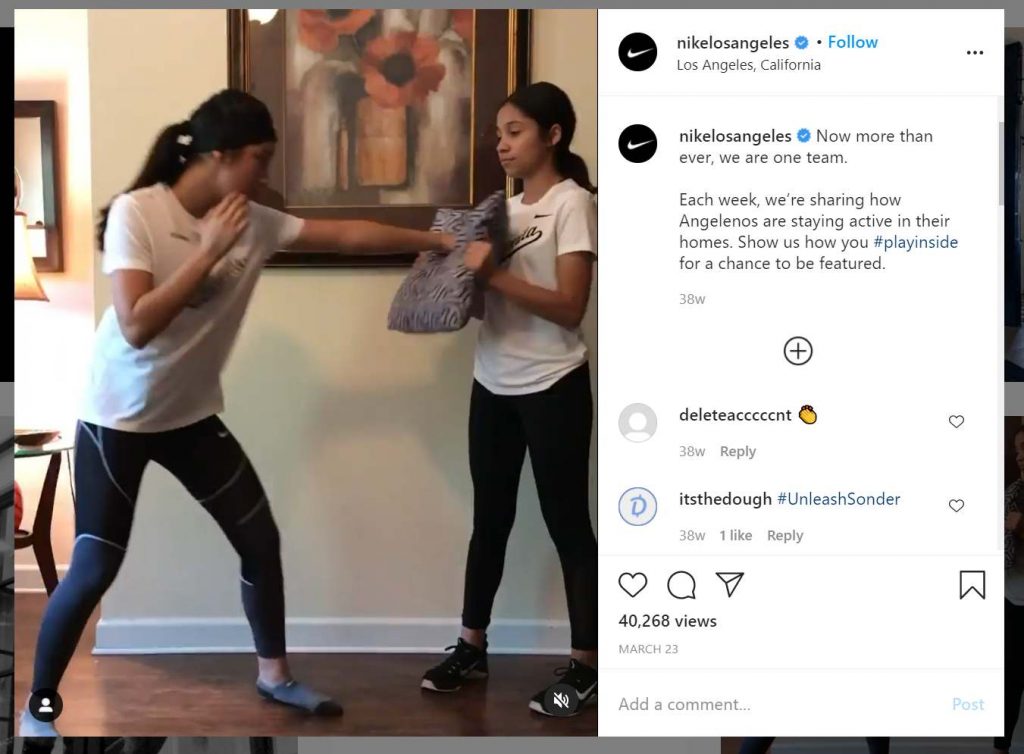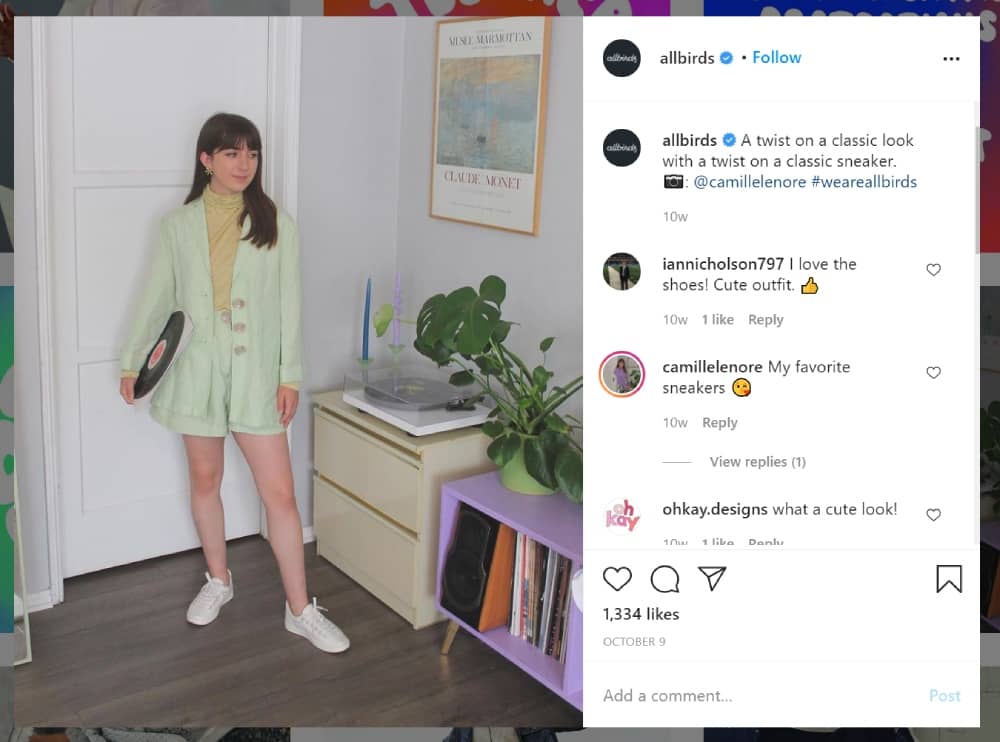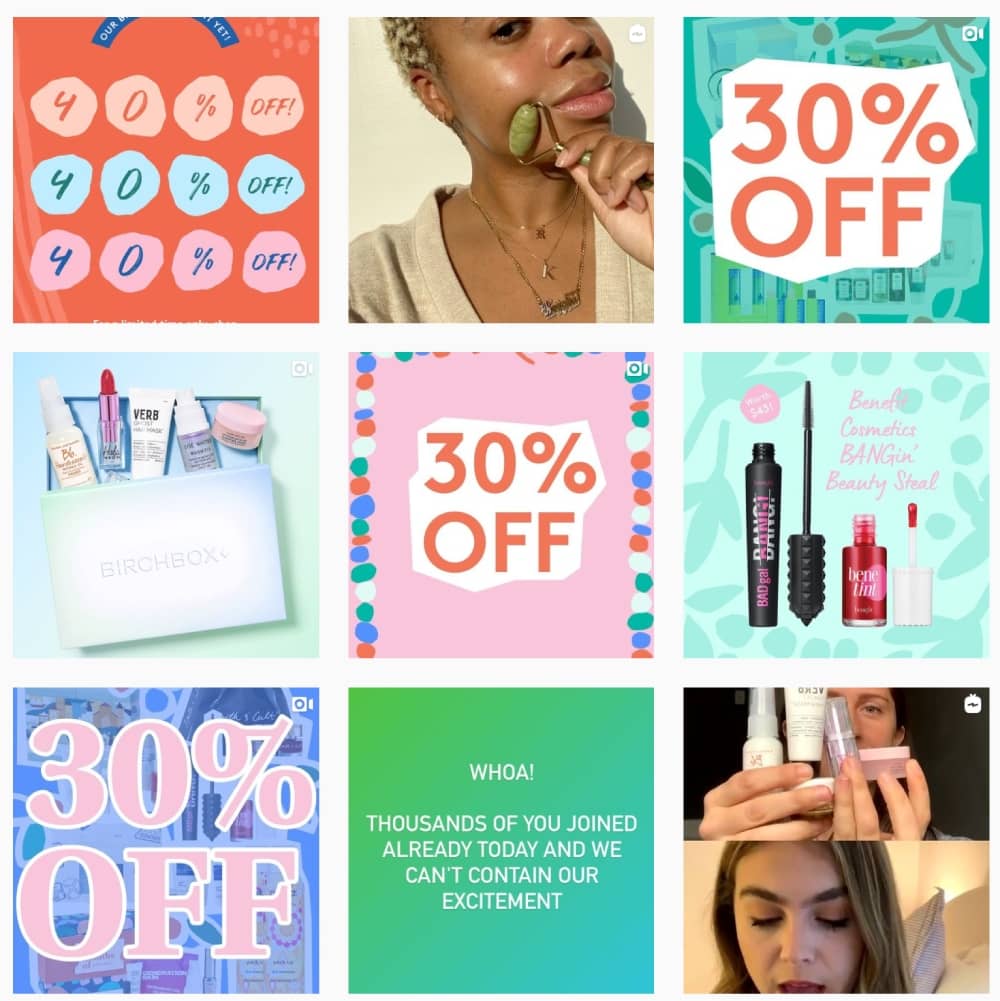In just a decade, Instagram has become one of the biggest social media platforms for business and ecommerce. With over 1 billion active users and 600 million users who log in daily, it has become an indispensable tool for brands to connect with their fans.
But with so many users and businesses on the platform, how can you stand out from the noise? And what should businesses post on instagram to convert followers into customers?
In this article, we take a look at what you should post on Instagram to achieve better brand recognition, more user engagement and boost sales.
Basic tips for Instagram ecommerce
Before we start, here are three basic things to keep in mind for ecommerce Instagram users.
Optimize for posting time and frequency
It takes a bit of research, but finding out when your users are online will help you get the most engagement with your posts.
The app provides some useful data into your content and posting activity through the ‘insights’ function. You can find information that will help you learn more about your followers and their behaviour, including:
- When your followers are on Instagram (which days and at what time)
- Demographic information, including their gender, age range and geographic location
- How many people visit your profile and engage with your account and when.
You can also get a good insight into how many people see your content through reach and impressions, and when.
These key metrics about your Instagram account and followers can be a great resource for figuring out your posting calendar to maximize impact and reach.
But this is just part of the puzzle. Using this information, try to test a few metric combinations in order to determine when you get the most likes and comments on your content.
Use relevant hashtags
Hashtags are still one of the best ways for you to get discovered by your target audience and grow your followers. They make it easy for people to discover topics they are interested in, which means more potential customers for your business.
Make your brand searchable by using a variety of hashtags on your posts. Use stories that describe your posts and your business so you can reach a wide range of communities.
Instagram lets you add 30 hashtags to posts and 10 hashtags to stories. However you should test to see what number works best for your content and audience. Some types of hashtag you can use include:
- The type of product or service, like #jewelry or #fashion;
- Descriptions of the photo, like #bluesky or #hike;
- Special events, like #blackfriday or #christmas;
- Daily hashtags, like #mondaymotivation or #throwbackthursday; and
- Acronyms, like #ootd (outfit of the day) or #tgif (thank God it’s Friday).
Don’t be afraid to create and distribute your own hashtag! It can be a fun, interactive way to build your brand. You can use your company name or one of your products, or you can create something that matches your brand identity.
You can easily use branded hashtags to collect user-generated content. Encourage your Instagram followers to use your hashtag in their posts and stories, leveraging their influence to reach new audiences. You can also follow your brand hashtag to see the content that your followers are sharing.
During the COVID-19 pandemic, Nike Los Angeles used the hashtag #playinside to share images of people working out and staying fit at home and encourage others to do the same.

Key Instagram terminology you need to know
- Followers: How many people like and follow your Instagram profile.
- Reach: How many unique users saw your Instagram post or story that day. This helps you measure brand awareness.
- Impressions: How many times your content – posts, stories, Reels and IGTV – could have been seen by users. Posts with a high impressions-to-reach ratio let you know what is performing well.
- Engagement rate: How many people engaged with your post divided by how many people saw your posts. This can help you track your progress as you test new marketing campaigns or messaging strategies.
- Saved posts: How many users saved your posts. This lets users revisit your content multiple times.
What to post on Instagram to boost your sales and brand recognition
Your customers are already on Instagram — it’s just a matter of finding them!
But having 10,000 or 100,000 or even 1 million followers means nothing if they don’t engage with your content. How can you use Instagram to attract your target audience, build an online community and find new customers?
Here are some tips on what to post on Instagram to build your brand and boost your sales:
1. Perfect your product images
Make sure your Instagram account is rich in visual interest and is on-brand aesthetically.
Once you decide on a brand style and personality – or ‘look and feel’ – as well as a posting strategy, it is time to focus on your Instagram content.
Instagram at its heart is a photo sharing platform, so each post should be clearly focused and well-lit. Use soft, natural light, or build your own lightbox. Experiment with compositions and effects like creating a flatlay collage or changing your depth of field.
Check out Pixc’s Ultimate Guide to DIY Product Photography for more tips on high-quality product photography for ecommerce.
And don’t shy away from posting videos – learn more below.
2. Re-post follower content
An easy way to engage and grow your Instagram followers is by sharing their content.
User-generated content (UGC) is essential for every brand on Instagram and should be a key part of your Instagram posting strategy. It is considered by other users to be authentic and trustworthy. And impressively, nearly 80% of people said that UGC has a big impact on their purchasing decisions.
Plus, it will boost your engagement with the user whose content you shared and create brand loyalty. Your customers feel seen and validated by a brand they admire.
Encourage followers to tag you in their posts and stories. Make sure that you tag them in the post to give proper attribution. (You can find more helpful guidelines here.)
For example, sustainable shoe brand Allbirds regularly shares content posted by their #weareallbirds community – i.e. their followers and fans.

3. Partner up with social influencers
Collaborating with Instagram influencers is one of the best and most popular ways for ecommerce businesses to reach a new and engaged audience, increase brand awareness and drive sales.
To find influencers in your niche, search for relevant keywords, hashtags and company names in the Instagram search bar. Then identify the accounts you want to partner with.
Depending on your market and industry, it might be better to reach out to micro influencers, i.e. accounts with between 1,000 and 10,000, or nano influencers . They generally have a highly engaged audience, and are considered to be very relatable and trustworthy by their audiences.
4. Announce promotions
Direct sales are available on Instagram! Users can scroll through their feed and purchase from your store without leaving the app.
But you can give your followers more incentive to follow your brand on Instagram by distributing exclusive deals and discount codes in your posts.
This could be:
- Flash sales happen at a specific time and encourage your followers to check your feed regularly.
- Daily sales allow posts to be spaced throughout the day, reaching more followers and staying closer to the top of the feed. Brands like Birchbox sprinkle sales posts throughout their regular content.
- Spot sales are shopping events that happen once or twice a month and feature new or exclusive products . Brands like Lulu Frost are big fans of this type of sale.

5. Host a contest
Contests and giveaways are a surefire way to boost engagement on your posts and exposure for your account.
But before you launch, make sure that you follow these steps:
- Set objectives and goals – what do you want to achieve with the giveaway?
- Determine how long the competition will last.
- Choose what contestants will win.
- Decide how people should enter the competition – it can be as simple as a ‘like to win’ or ‘repost to win’ prize contest, or it can be more involved like a photo challenge.
- Decide how winners will be chosen and how you will notify them.
- Set terms and conditions.
- Don’t forget to check and follow Instagram’s competition rules too!
And don’t forget the hashtag! Creating an engaging hashtag is an efficient way to organize entries and get the word out about your brand.
6. Make the most of Instagram’s tools
There are more ways to connect with your customers than just posting pictures on your feed.
As an ecommerce brand on Instagram, you should also use some of Instagram’s other exciting tools to post videos. Here is a quick rundown:
Stories
Instagram Stories are photos and videos that disappear after 24 hours – although you can save them to your feed to make them last longer. It is a useful way to keep users coming back for more fresh, exciting content.
IGTV
IGTV is similar to Stories, but videos are typically several minutes to an hour in length and they don’t disappear.
Reels
Reels lets you record and edit 15-second videos with different audio, visual and creative effects and tools. It is the newest feature on Instagram and a great tool for brands to get discovered by new and relevant audiences via the Explore page.
Although it bears some similarity to TikTok, you shouldn’t cross-post the content. Not only does it look unprofessional, but the target audiences are different. For example, nearly 70% of TikTok users are 13-24 years old whereas the largest bracket of Instagram users are 25-34 years old.
Instead, you should customize your content to the platform to make sure it looks as good as it can. Try creating fun and engaging content, such as:
- Product how-to videos;
- Lifestyle and styling inspiration – establish yourself as an expert in your field;
- Behind the scene;
- New product or campaign teasers; and
- User-generated content.
Bonus: Apps and tools for Instagram
While Instagram’s in-app photo editing features work well, there are a variety of other apps and tools out there that can enhance your Instagram content.
1. VSCO
VSCO provides filters more subtle and fine-tuned than those built by Instagram. Their wide selection of editing tools allows you to play with saturation, exposure, contrast, tints, graininess and much more.
2. Snapseed
Snapseed is an easy-to-use photo editor developed by Google. You can edit the picture using professional features – including tuning the image and selectively retouching exposure, saturation, brightness or warmth – as well as adding fun filters.
3. PicCollage
PicCollage lets you create a photo collage with thousands of stickers and backgrounds. You can choose different templates, add doodles and text to create a fun and engaging way to show multiple views of one product.
4. Canva
Canva is a design program that produces infographics, stylized text photos and text overlays for Instagram, Facebook, Twitter and email. With thousands of templates and stock photos, Canva enables anyone to develop creative content for their brand.
Dive into Instagram for ecommerce
Instagram holds great potential for brands at every stage of the sales cycle, from lead generation to conversion. Your customers are already there, and they’ll love to follow you if you provide captivating content. Start building your audience now and you’ll reap many social media rewards for a long time to come.








